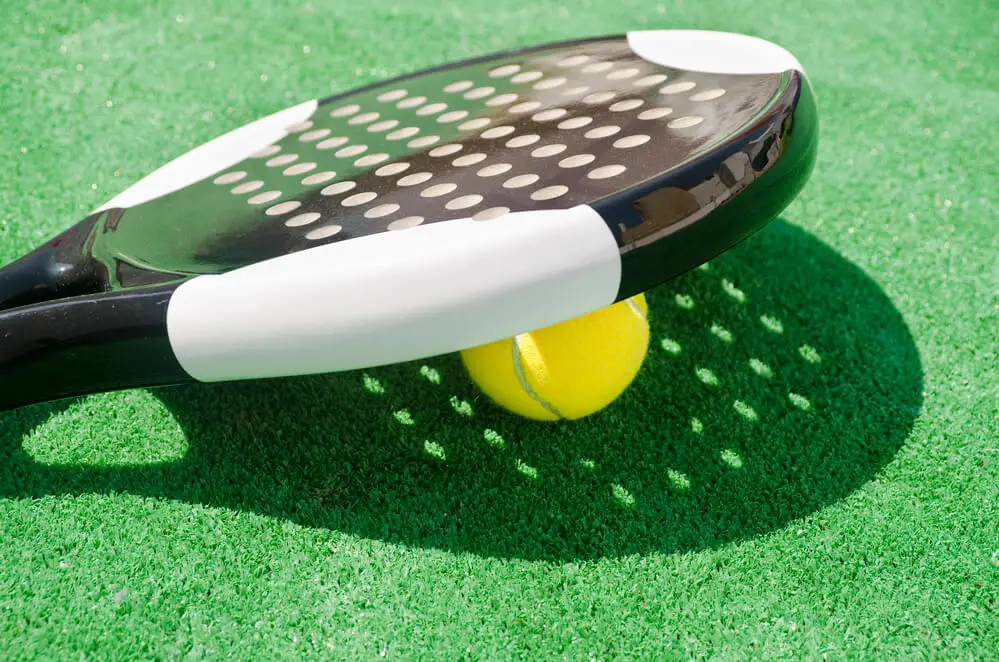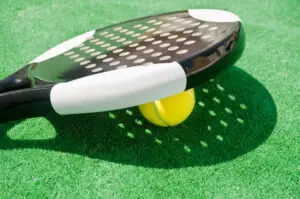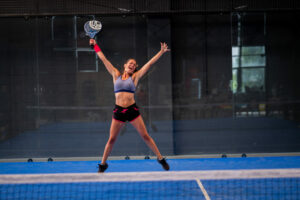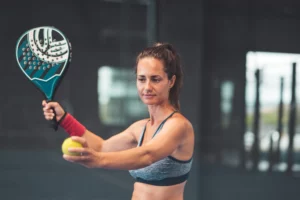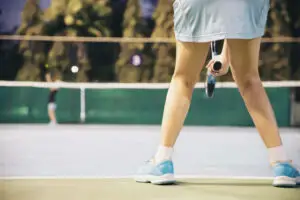In the fast-paced and exciting world of padel, choosing the right padel racket can make all the difference in your game. The selection process often comes down to a fundamental choice: light or heavy rackets. In this article, we delve into the significance of this decision and provide insights into the factors to consider when choosing between these two distinct categories of padel rackets.
Whether you’re a beginner looking for control or an advanced player seeking power, understanding the differences between light and heavy rackets is crucial to elevating your padel experience.
To make an informed choice, it’s crucial to understand the significance of padel racket weight.
In this guide, we delve into the world of padel racket weight, offering insights that will aid your selection process and complement our detailed recommendations for the best lightweight padel racket.
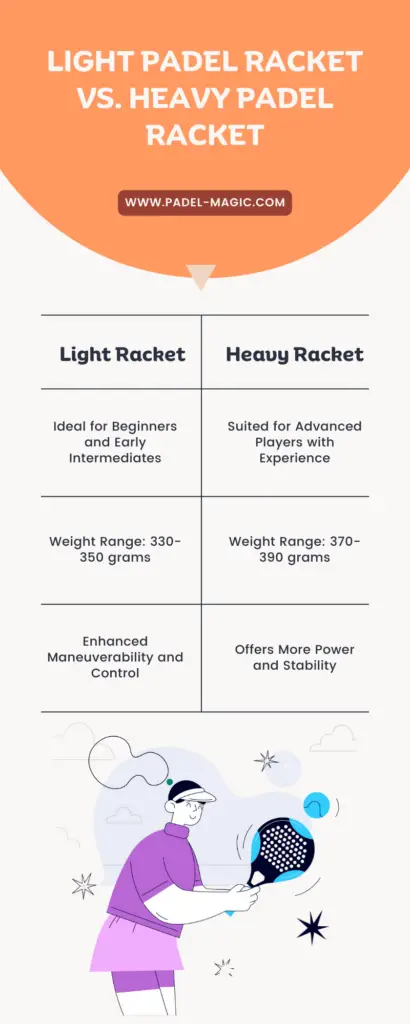
Padel Rackets Weight Categories
In the realm of the best padel rackets, we categorize them into two distinct weight classes: light padel rackets and heavy padel rackets. These categories serve as a fundamental reference point for players seeking to fine-tune their padel equipment.
Each weight category comes with its specific weight range, allowing players to choose a racket that aligns with their playing style and preferences. Understanding these weight ranges is essential for making an informed decision.
Navigating Padel Racket Weight
Utilize this handbook as your reference when making your padel racket selection. The guide below categorizes padel rackets into weight classes:
- Light: Rackets in this category typically weigh between 330-350 grams.
- Average: Falling in the range of 350-370 grams, these rackets offer a balanced weight.
- Heavy: Rackets on the heavier side generally weigh between 370-390 grams.
This categorization allows you to easily identify the weight class of any padel racket you encounter while browsing online. Additionally, keep in mind that you can adjust your racket’s weight by adding multiple overgrips and a racket protector, which may increase its weight by approximately 5-10 grams. This is an aspect worth considering as you tailor your racket to your specific preferences and needs.
Light Padel Racket Benefits
Maneuverability:
Light padel rackets are easier to handle and maneuver on the court. This agility allows players to react quickly to fast-paced shots, reach difficult balls, and make precise movements, enhancing their overall court coverage.
Quick Reactions:
The reduced weight of these rackets enables players to react swiftly to changing game situations. This quick responsiveness is particularly advantageous during rallies and defensive plays.
Reduced Strain:
Light rackets place less strain on the arm and shoulder, reducing the risk of fatigue and injury during extended matches. Players can enjoy longer gameplay sessions with less physical strain.
Control:
Light rackets provide excellent control over the ball. Players can execute shots with precision, making it easier to place the ball where they want it, whether for accurate volleys, delicate drops, or controlled smashes.
Agility:
The lightweight design of these rackets enhances players’ agility and court mobility. This agility is valuable for players who favor an active playing style, incorporating swift net play and agile movements.
Ease of Learning:
Light rackets are often recommended for beginners due to their ease of use. They facilitate learning fundamental techniques and control, helping new players develop their skills.
Versatility:
Light rackets can be versatile tools, suitable for players of various skill levels and playing styles. They can accommodate both defensive and offensive play, making them adaptable for different strategies.
Overall, light padel rackets provide players with the agility, control, and comfort needed to excel on the padel court, making them a popular choice among players who prioritize maneuverability and quick reactions.
Light Padel Racket Pros and Cons
Pros
Light rackets are easier to maneuver during defensive plays, allowing players to respond quickly to opponents’ shots and position themselves effectively for blocks and returns.
Light rackets can adapt to various playing styles. They are suitable for both offensive and defensive strategies, making them versatile choices for different game approaches.
After executing shots, players can recover their racket position swiftly due to the reduced weight, ensuring they are ready for the next play.
Light rackets offer excellent control, enabling players to place the ball precisely where they intend to on the court. This precision is advantageous for executing drop shots and accurate lobs.
Light padel rackets are often recommended for youth players and juniors, as their lower weight is better suited for developing players who may not have the physical strength of adults.
Cons
Light rackets may offer less power behind shots compared to heavier rackets. Players who rely heavily on powerful smashes and offensive play may find that they need to compensate for the reduced weight.
When dealing with hard shots, particularly powerful serves or volleys, light rackets may exhibit less stability. The reduced weight can make it challenging to absorb the impact of such shots.
Players who favor smashing the ball aggressively might find that light rackets can limit their ability to generate maximum power for smashes.
Light rackets can vary in playability, and some players may prefer specific brands or models over others within the light racket category. It’s essential to test different options to find the right fit.
Heavy Padel Racket Benefits
Powerful Shots:
One of the primary advantages of heavy padel rackets is their ability to generate significant power behind shots. The added weight of the racket allows players to deliver forceful smashes, volleys, and serves, making it easier to put pressure on opponents and win points.
Stability:
Heavy rackets provide greater stability, especially when dealing with hard-hitting shots from opponents. They absorb the impact of powerful shots more effectively, allowing players to maintain control over the ball and maintain consistency in their gameplay.
Control on Difficult Shots:
Heavy padel rackets excel at handling difficult shots, such as high-bouncing balls or shots taken at awkward angles. Their weight provides added control, enabling players to manage these challenging situations with confidence.
Enhanced Net Play:
Heavy rackets are particularly advantageous for players who engage in aggressive net play. The stability and power they offer allow for effective net smashes and volleys, making it difficult for opponents to defend against close-range shots.
Durability:
Heavy rackets are often built with robust materials to withstand the additional force they endure. This durability ensures that the racket remains reliable even during intense and prolonged matches.
Counterbalance for Defensive Play:
When faced with strong shots from opponents, heavy rackets act as counterbalances, helping players maintain their position and control on the court during defensive maneuvers.
Wind Resistance: The added weight can help reduce the impact of wind on your shots, allowing for more precise and consistent play in various weather conditions.
Ideal for Strong Players:
Heavy padel rackets are well-suited for players with good physical strength who can maximize the benefits of added power and stability in their gameplay.
Heavy Padel Racket Pros and Cons
Pros
Heavy rackets provide added confidence in defensive play. They make it easier to block and return fast-paced shots, allowing players to hold their ground during intense rallies and maintain their defensive posture.
Heavy rackets are particularly effective for smashing the ball at the net. Players can generate substantial power and control when executing smashes, making it challenging for opponents to defend against these aggressive shots.
Heavy rackets offer improved consistency in volley shots. Their stability and weight help players maintain a steady hand during close-range exchanges at the net, reducing the risk of mishitting the ball.
Heavy rackets absorb the force of an opponent’s shots, reducing the impact on a player’s arm and body. This can help players stay in the game longer without experiencing discomfort or injury.
Heavy padel rackets are well-suited for players with strong physical strength. They can fully leverage the racket’s power potential, making it an excellent choice for athletes who rely on their physical prowess in matches.
Heavy rackets offer improved consistency in volley shots. Their stability and weight help players maintain a steady hand during close-range exchanges at the net, reducing the risk of mishitting the ball.
Cons
Heavy rackets are less maneuverable due to their weight. Players may find it challenging to react quickly to fast-paced shots and make rapid movements on the court.
The added weight can result in slower reactions to the opponent’s shots. Players may struggle to adapt to rapidly changing game situations, particularly during intense rallies.
The extra weight can place more strain on the arm and shoulder muscles. Extended use of heavy rackets may lead to arm fatigue, affecting a player’s overall performance.
Heavy rackets may not be as versatile as lighter options, as they are primarily designed for powerful shots. Players who prefer a more balanced playing style may find these rackets less suitable.
Match Padel Racket Weight to Player Profile
Choosing the right padel racket weight is a critical step in optimizing your performance on the court. Your player profile, skill level, and playing style all play pivotal roles in determining the ideal weight for your racket.
For Beginners:
If you’re just starting your padel journey, lighter rackets are your best ally. These rackets enhance maneuverability and control, allowing you to focus on developing your skills without feeling overwhelmed by weight.
READ MORE: Best Padel Rackets For Beginners
For Intermediate Players:
Intermediate players often seek a balance between power and control. Rackets with a moderate weight distribution are the sweet spot, enabling you to fine-tune your game, deliver precise shots, and maintain a competitive edge.
READ MORE: Best Padel Rackets For Intermediate Players
For Advanced Players:
Advanced players bring expertise to the court and require rackets that complement their strengths. Heavier rackets provide the stability and power needed to maximize your performance and outplay opponents.
By matching your racket’s weight to your player profile, you’re setting the stage for success. It’s a game-changing decision that can make all the difference in your padel journey.
READ MORE: Best Padel Rackets
For Advanced Players
Light Vs. Heavy Rackets: A Men's Perspective
In the realm of padel, selecting the right racket is pivotal, and for men, this choice often oscillates between light and heavy options. Padel rackets for men need to correspond not just to physical strength but also to the nuances of individual playstyle.
Light rackets, known for their deftness, offer an ease of movement essential for players who thrive on agility and precision. They cater to a fast, reactive style, often favored by those who employ tactical prowess over raw power.
Conversely, heavy rackets are synonymous with strength and momentum, often aligning with the stereotypical male approach to power-driven play. They enhance the force behind each strike, a crucial component for those who base their game on aggressive shots and authoritative control of the ball.
This additional weight, while advantageous in power plays, demands greater physical exertion and control, making it imperative for players to consider their endurance and comfort on the court.
Light Vs. Heavy Rackets: A Woman's Perspective
Choosing between light and heavy rackets is a nuanced decision, influenced by personal comfort, strength, and playing style. Light rackets are popular for their ease of handling, promoting agility and quick responses, and ideal for strategic plays. Conversely, heavy rackets are favored by players with a robust, power-driven approach, as they enhance shot strength but demand greater physical control to prevent strain.
Ultimately, selecting padel rackets for women is an individualized process. It’s not just about the racket’s weight; it’s about how it harmonizes with a player’s physical capabilities and game tactics.
Whether opting for the swiftness of a light racket or the commanding presence of a heavy one, the right choice is about amplifying a player’s natural strengths and comfort on the padel court.
Conclusion
In our perspective, lighter padel rackets prove to be a better match for beginners and those in the early stages of their padel journey. They provide the maneuverability and control necessary for mastering the fundamentals of the game.
On the other hand, heavier padel rackets cater more to the needs of advanced players who possess experience and seek added power to dominate their matches effectively.
It’s crucial to note that individuals dealing with tennis elbow or epicondylitis concerns should opt for a lighter racket. This choice helps alleviate strain and discomfort.
I hope this information proves valuable in your decision-making process. I’m curious to know your preference – do you lean towards the light or heavy side of the padel racket spectrum?

